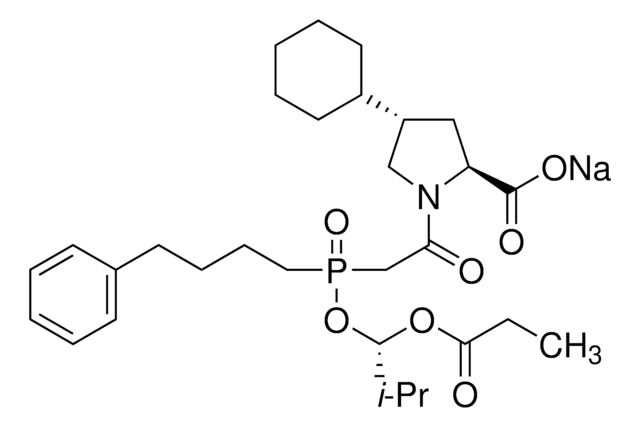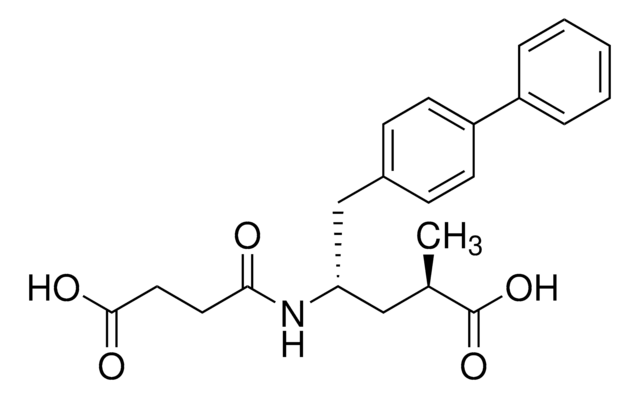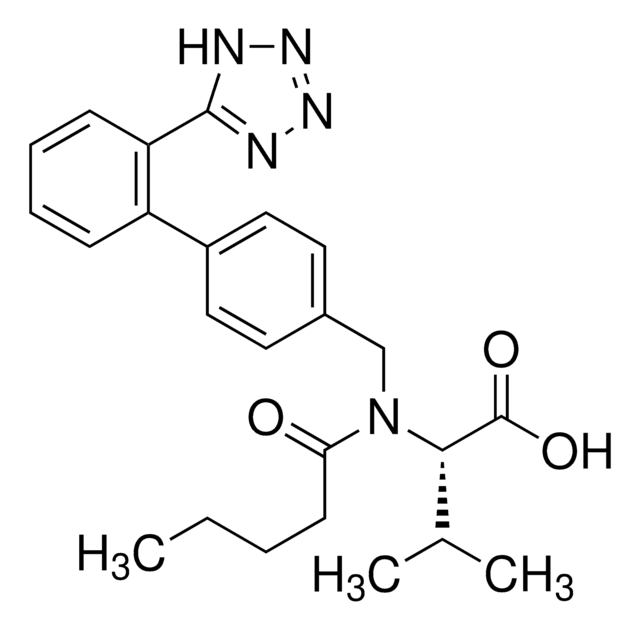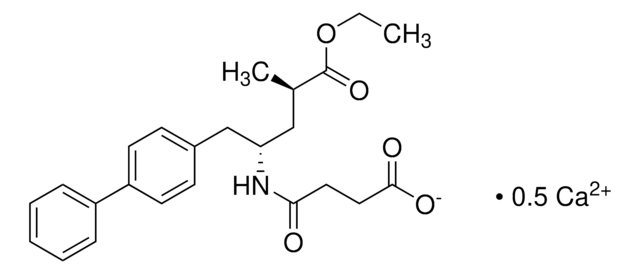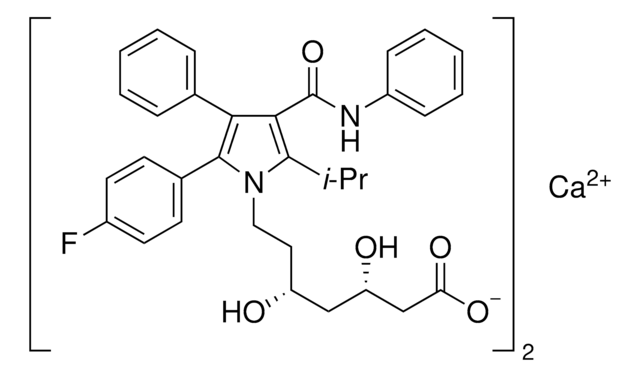Wichtige Dokumente
1270800
USP
Flecainidacetat
United States Pharmacopeia (USP) Reference Standard
Synonym(e):
Flecainid -acetat (Salz), N-(2-Piperidylmethyl)-2,5-bis-(2,2,2-trifluorethoxy)-benzamid -acetat (Salz)
About This Item
Empfohlene Produkte
Qualität
pharmaceutical primary standard
API-Familie
flecainide
Hersteller/Markenname
USP
Anwendung(en)
pharmaceutical (small molecule)
Format
neat
Lagertemp.
2-8°C
SMILES String
CC(O)=O.FC(F)(F)COc1ccc(OCC(F)(F)F)c(c1)C(=O)NCC2CCCCN2
InChI
1S/C17H20F6N2O3.C2H4O2/c18-16(19,20)9-27-12-4-5-14(28-10-17(21,22)23)13(7-12)15(26)25-8-11-3-1-2-6-24-11;1-2(3)4/h4-5,7,11,24H,1-3,6,8-10H2,(H,25,26);1H3,(H,3,4)
InChIKey
RKXNZRPQSOPPRN-UHFFFAOYSA-N
Angaben zum Gen
human ... SCN5A(6331)
Suchen Sie nach ähnlichen Produkten? Aufrufen Leitfaden zum Produktvergleich
Allgemeine Beschreibung
For further information and support please go to the website of the issuing Pharmacopoeia.
Anwendung
- Advanced Drug Delivery for Tuberculosis Treatment: Flecainide acetate is integral in developing inhalable porous particles, demonstrating effective lung drug delivery systems for treating tuberculosis. This novel application optimizes the therapeutic index of antituberculosis medications, minimizing systemic side effects while maximizing pulmonary uptake (Campos Pacheco et al., 2024).
- Cardiac Arrhythmia Management: Flecainide acetate, known for its role in arrhythmia management, has been studied for its efficacy following patent foramen ovale closure. The drug′s mechanism as a sodium channel inhibitor makes it a pivotal agent in preventing atrial fibrillation post-surgery, enhancing patient recovery and long-term cardiac health (Apostolos et al., 2024).
- Genetic Research on Arrhythmias: Flecainide acetate is used in genetic models to establish a life-threatening arrhythmia model by screening mutagenized mice. This research aids in identifying genetic predispositions to arrhythmias, paving the way for targeted therapies that modify disease progression and improve patient outcomes (Okabe et al., 2024).
- Electrophysiological Studies: Flecainide acetate′s properties as a class 1C antiarrhythmic agent are utilized in clinical electrophysiology to assess and refine therapeutic strategies for ventricular complex suppression in nonischemic cardiomyopathy. This application underlines its importance in detailed cardiac function studies and therapy optimization (Ruskin et al., 2024).
- Toxicology and Safety Profiling: Research on the potential pitfalls in using hypertonic sodium bicarbonate for treating cardiac toxic drug poisonings, where flecainide acetate is involved, underscores the complexity of managing drug-induced cardiac emergencies. This study provides crucial insights into safer, more effective antidotal therapies (Chan and Buckley, 2024).
Hinweis zur Analyse
Sonstige Hinweise
Ähnliches Produkt
Signalwort
Danger
H-Sätze
Gefahreneinstufungen
Acute Tox. 4 Oral - Eye Irrit. 2 - Repr. 1B - Skin Irrit. 2 - STOT SE 3
Zielorgane
Respiratory system
Lagerklassenschlüssel
6.1C - Combustible acute toxic Cat.3 / toxic compounds or compounds which causing chronic effects
WGK
WGK 3
Flammpunkt (°F)
Not applicable
Flammpunkt (°C)
Not applicable
Hier finden Sie alle aktuellen Versionen:
Analysenzertifikate (COA)
It looks like we've run into a problem, but you can still download Certificates of Analysis from our Dokumente section.
Wenn Sie Hilfe benötigen, wenden Sie sich bitte an Kundensupport
Besitzen Sie dieses Produkt bereits?
In der Dokumentenbibliothek finden Sie die Dokumentation zu den Produkten, die Sie kürzlich erworben haben.
Unser Team von Wissenschaftlern verfügt über Erfahrung in allen Forschungsbereichen einschließlich Life Science, Materialwissenschaften, chemischer Synthese, Chromatographie, Analytik und vielen mehr..
Setzen Sie sich mit dem technischen Dienst in Verbindung.
